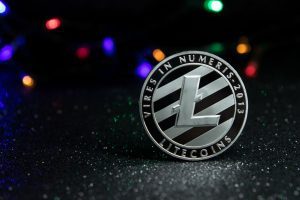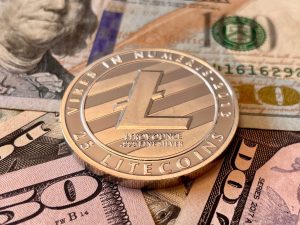
Litecoin ($LTC) has emerged as one of the leading cryptocurrencies in the digital asset market. Often referred to as the “silver to Bitcoin’s gold,” $LTC has gained popularity and recognition for its unique features and potential for growth.
Created in 2011 by Charlie Lee, a former Google engineer, $LTC was designed to be a peer-to-peer digital currency that offers faster transaction confirmation times and a different hashing algorithm than Bitcoin. These features make $LTC more efficient and scalable, allowing for quicker and cheaper transactions compared to its predecessor.
One of the main reasons for Litecoin’s success is its ability to adapt and innovate. Over the years, $LTC has implemented various upgrades and enhancements to improve its functionality and address the changing needs of its user base.

For example, the introduction of extension blocks and the upcoming implementation of MWEB (MimbleWimble Extension Block) will enhance Litecoin’s privacy and fungibility, making it an attractive option for users seeking enhanced security and anonymity.
$LTC has also seen increased adoption and integration within the cryptocurrency ecosystem. It is supported by numerous cryptocurrency exchanges and wallet providers, making it easily accessible for users to buy, sell, and store their LTC tokens. Additionally, Litecoin has been integrated into payment processors and merchant services, allowing businesses to accept LTC as a form of payment.
Another factor contributing to Litecoin’s appeal is its upcoming block reward halving. Similar to Bitcoin, Litecoin experiences halving events approximately every four years, reducing the block reward given to miners. This scarcity mechanism has historically led to price increases in cryptocurrencies, and Litecoin has followed this pattern in the past.
While Litecoin has experienced significant price volatility, it has shown resilience and maintained its position as one of the top cryptocurrencies by market capitalization. Its dedicated community and active development team continue to work towards further improvements and advancements.
Litecoin Reaches a One-Month High of Over $95.

Litecoin ($LTC) has experienced a significant surge in price, reaching a one-month high of over $95. Over the past week, LTC has outperformed most other major cryptocurrencies, with a price increase of more than 15%.
However, the cryptocurrency has since dropped to $92. Only Lido ($LDO), a liquid staking solution token, surpassed LTC’s performance during the same period with a price rise of over 36%.
Data from Coinglass indicates that the dollar value of open futures contracts tied to Litecoin has reached its highest level since early December, standing at $478 million. This rise in open interest suggests an influx of new money into the market, although it is unclear whether the leverage is tilted towards a bullish or bearish sentiment.
One possible reason for Litecoin’s price surge could be the recent congestion on the Bitcoin network. This congestion was caused by the growing adoption of Bitcoin Request for Comment (BRC)-20 tokens, which are built with Ordinals and stored on the base Bitcoin network.
The severity of the congestion led to Binance, a leading cryptocurrency exchange, temporarily halting withdrawals on the Bitcoin blockchain. To address this issue and prevent future occurrences, Binance adjusted its withdrawal fees, which are used to pay for transactions on the Bitcoin blockchain.
The exchange also mentioned that it is monitoring on-chain activity and working on enabling BTC Lightning Network withdrawals to alleviate such situations in the future.
Additionally, Litecoin has introduced a fork of the BRC-20 token standard called LTC-20. This development has resulted in a new record high of 580,000 confirmed transactions on LTC on May 10, while the number of active addresses grew to 830,000.

Litecoin’s creator, Charlie Lee, has expressed optimism about the cryptocurrency’s potential for significant gains leading up to its highly-anticipated August halving event. Lee attributes this potential growth to Litecoin’s design features, such as higher throughput, enhanced scalability with extension blocks, better fungibility, and increased privacy via MWEB.
The recent price recovery of Litecoin has coincided with increasing excitement surrounding the upcoming block reward halving. In August 2023, the Litecoin block reward for miners will be reduced by 50% from 12.5 LTC to 6.25 LTC. This reduction in the new LTC supply theoretically makes it scarcer on the market, potentially driving its price upward if demand remains constant or grows.
According to historical Litecoin price data, there is a possibility of a surge in LTC’s price months after the halving event, potentially leading to a new all-time high next year. However, it is worth noting that the cryptocurrency could experience a correction immediately after the halving.
Analysts, such as Rekt Capital, have observed strong rallies in Litecoin’s price before its previous halving events. After the first halving, LTC surged by 12,400%, and after the second halving, it rose by 1,573%.
It is important to remember that the impact of halving events on cryptocurrency prices is not guaranteed, and opinions on the matter vary among analysts. Past performance is not a reliable indicator of future performance.
In summary, Litecoin has seen a significant price surge, outperforming most other major cryptocurrencies in the past week. Factors contributing to this surge include congestion on the Bitcoin network, the introduction of LTC-20 as a fork of the BRC-20 token standard, and the anticipation of the upcoming halving event.
While historical data suggests the potential for significant price increases after halving events, the future performance of Litecoin and any cryptocurrency is uncertain.